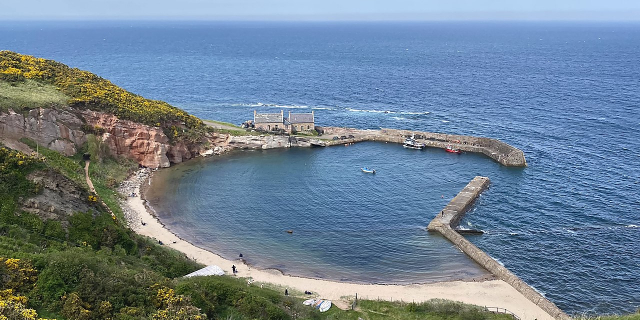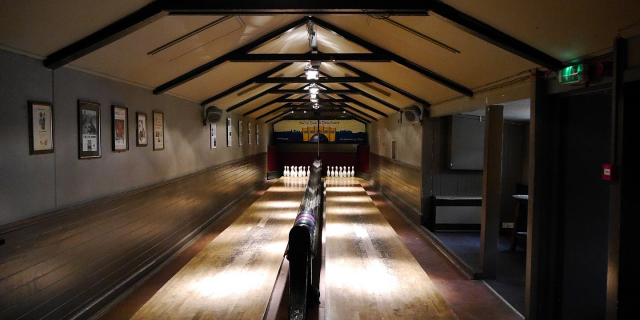Bamburgh ( BAM-bər-ə) is a village and civil parish on the coast of Northumberland, England. It had a population of 454 in 2001, decreasing to 414 at the 2011 census.
Bamburgh was the centre of an independent north Northumbrian territory between 867 and 954. Bamburgh Castle was built by the Normans on the site of an Anglo-Saxon fort. The Victorian era heroine Grace Darling is buried there.
The extensive beach by the village was awarded the Blue Flag rural beach award in 2005. The Bamburgh Dunes, a Site of Special Scientific Interest, stand behind the beach. Bamburgh is popular with holidaymakers and is within the Northumberland Coast Area of Outstanding Natural Beauty.
The site now occupied by Bamburgh Castle was previously home to a fort of the Celtic Britons known as Din Guarie[1] and may have been the capital of the kingdom of Bernicia, the realm of the Gododdin people,[2] from the realm's foundation in c. 420 until 547, the year of the first written reference to the castle. In that year, the citadel was captured by the Anglo-Saxon ruler Ida of Bernicia (Beornice) and became Ida's seat.[3] The Anglo-Saxons called the place Bebbanburh, meaning "Queen Bebba's stronghold";[4] this was later corrupted into the modern "Bamburgh". Aidan of Lindisfarne came to this area from the monastery of Iona in 635 on behalf of King Oswald of Northumbria.
Following the defeat of Northumbrian forces by the Viking Great Heathen Army, at York in 867, the Kingdom of Northumbria disintegrated. Southern Northumbria became the Viking-ruled Kingdom of York, while north remained under Anglo-Saxon control under the high reeves of Bamburgh. The territory finally became part of the Kingdom of England in 954.
The late medieval village began to develop near the castle.[5] During the Dissolution of the Monasteries the property of the friars, including the castle, was seized on behalf of Henry VIII.[6]
Late medieval British author Thomas Malory identified Bamburgh Castle with Joyous Gard, the mythical castle home of Sir Lancelot in Arthurian legend.[7]


































Add new comment